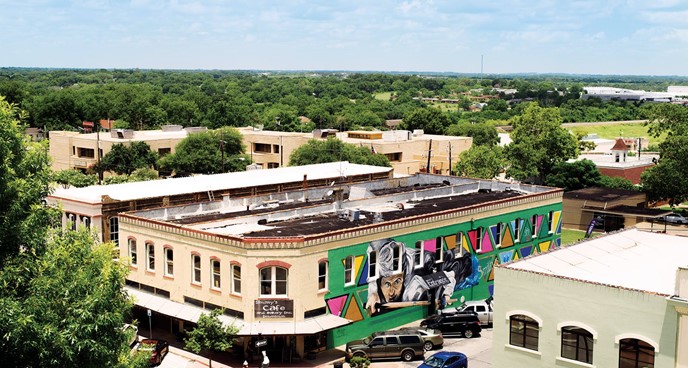Once upon a time, movement to cities showed progress. Urbanization has long been a measure of the economy, society, culture, technology, and other social factors. Today, the same holds true. America’s smaller cities are finally getting their break amid the COVID-19 pandemic. Spurred by work from anywhere, the economic downturn, and social unrest, the population is making an exodus to small-town America. Here’s what you should know.
Why now?
The coronavirus created the perfect conditions for city dwellers to leave major metropolitan areas like New York and San Francisco. When COVID-19 hit hard in March 2020, a variety of factors prompted the virus to spread rapidly. This included the dense nature of urban living as well as a lack of government planning. Those in cities were forced inside small apartments with heavy restrictions on movements and actions to help slow the spread.
In fact, city dwellers were stuck in all but one way. Unless they were an essential worker, they no longer had to go into the office each day. They had the ability to work from home (or truly anywhere that didn’t interfere with social distancing).
Although not everyone took advantage of this, there is one group that fled the urban scene early in the pandemic. Various news outlets are only now beginning to highlight the millennial generation (born between 1981 and 1996) and how their behavior illustrates this phenomenon.
For all intents and purposes, those in the millennial generation are adults. They’re age 23 and above, which means most may not be relying on their parents for significant financial assistance. They’re out of the house, out of college, and living on their own with a job. However, when coronavirus hit, the number of American adults living at home skyrocketed.
Zillow recently did a study that indicated roughly 2.9 million adults moved in with a parent or grandparent in March, April, and May. The reasons for this return varied. Some were still finishing college and had to leave campus. Others had difficult financial situations brought on by the pandemic – a popular reason that city dwellers are looking to leave expensive urban areas. The final? Rural and suburban areas are far superior when it comes to quarantine conditions.
When it comes to the work from anywhere lifestyle, would you rather do it from a one-bedroom apartment in Brooklyn or Silicon Valley? Or would you rather do it from a 4-bedroom house in Phoenix or Austin? It’s not a difficult choice for most people. With tens of thousands of workers realizing this around the country, an urban exodus is rearing to begin.
What does this look like post-COVID-19?
While we’re still in a pandemic, the questions are consistent, “What does a post-COVID-19 world look like?” And many companies don’t yet know the answer. Although the pandemic has largely restricted motion in America, the sweeping trend has shown that those who have been able to get out of cities have…and those who haven’t want to. If you’re afforded the freedom to work from anywhere, why wouldn’t you? Why would you stay in a city that was dictated by your employer if there’s somewhere else you’d want to be?
Companies like Twitter, Square, and Facebook have already announced that they’re going entirely remote. Likewise, Google is extending its remote work policy to July 2021. So, if work is no longer tying workers to a location, that means location choice and smaller cities are at the top of most people’s list.
Why smaller cities?
Along with social distancing concerns, 2020 has brought a lot of social unrest. Black Lives Matters and political disagreements have pushed the desire to relocate for some. Because social justice movements tend to pop up in cities because of dense populations, those who do not want to participate are also more likely to move away from these hot zones. These individuals may want to escape to smaller towns and rural America where they’re unlikely to see movements or to catch COVID-19. Others find comfort in knowing they don’t have to rely on anyone else for the essentials for their family. There’s a lot of uncertainty right now, so between the pandemic, the riots, and the financial disparity, an off-the-grid mentality has also started to rise.
Final thoughts
Overall, the uncertainty is mounting going into month six of the COVID-19 pandemic. However, if one thing is certain, it’s the fact big cities are on the decline. They not only act as epicenters of the virus, but they also limit the freedom that people have and the activities they can do. With work from anywhere expanding, individuals are moving out of cities to small cities and towns or even off the grid entirely.







